The Project
This project achieved a number of significant results, including a comprehensive assessment of introduced predators on Floreana. This research has given us a better understanding of the invasive species that are present on Floreana, more than we had on Santa Cruz. Sonia Kleindorfer of the University of Vienna says that in one year, 2022, at least twice as much introduced rats (Crotophaga anis) and smooth-billed anis were seen on Floreana than in other places, along with a greater population of Galapagos Short-Eared Owls (Asio flameus galapagoensis).
The findings of this research, together with the previous research that revealed a 90 percent failure rate in reproduction among Floreana bird species, provide a baseline for monitoring predator activities. These findings also emphasize the need for effective control measures in order to deal with the abundance of predators on Floreana.
[one_second]
A second striking observation was the presence of yellow warblers on Floreana (Dendroica aureola petechia), even though there had been very little rain and Darwin’s Finch nesting. These birds, which are hardy and have a melodious song, showed active nesting behaviors. They became the primary hosts for the avian vampirism fly (Philornis Downsi), a serious danger to native bird populations. The study, in response to these concerns, promotes specific strategies for eradicating P. downsi. These include dispensers of permethrin treated feathers and insect-growth regulators. These innovative approaches have been particularly effective in dry years. It is also important to note that they can be perfectly timed with the nesting period of yellow warblers which is usually January to February.
Scientist Washington Tapia is our General Director. He stressed that the findings of this study are crucial in guiding conservation efforts. He stated, “We reaffirm that we are committed to supporting research projects which contribute to the conservation and preservation of Galapagos species as well as the ecosystems in which they live.”
Galapagos Conservancy wishes to congratulate the scientists of the University of Vienna for their contributions, which remind us that science can be used as a tool not only to gain knowledge but also in order to ensure the preservation of Galapagos ecosystems.
[/one_second]
[one_second]
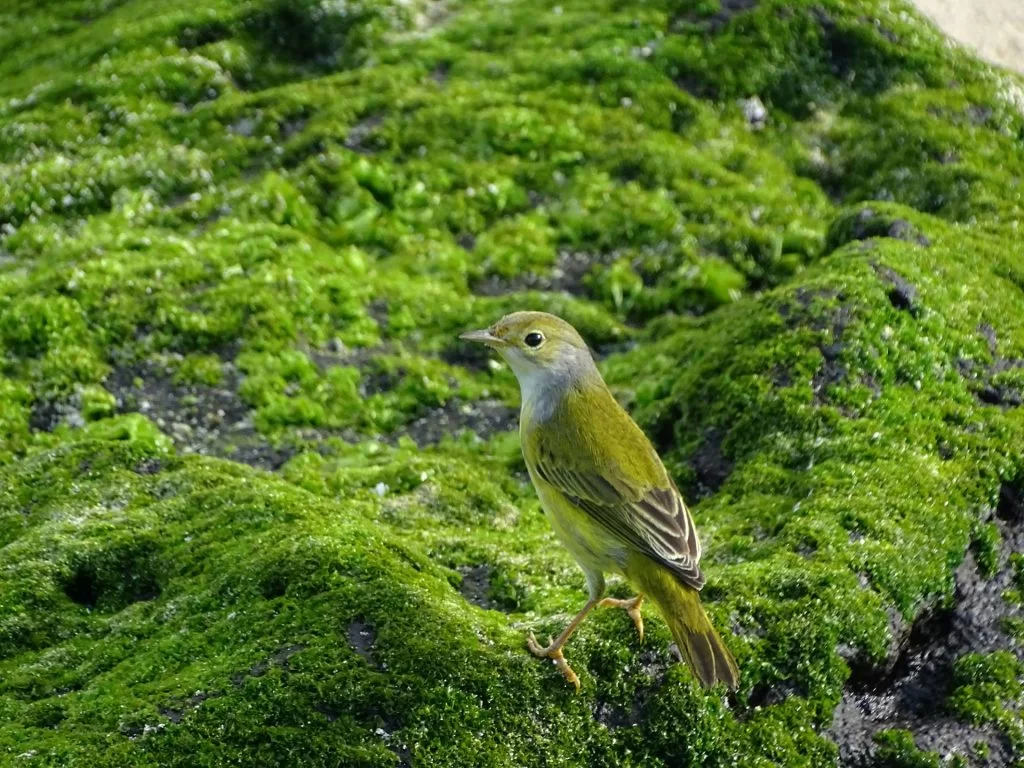
In a year of minimal rainfall, the Yellow Warbler emerges as a beacon of resilience, actively nesting and filling the Galápagos with its melodious tunes, despite the looming threat of the avian vampire fly. ©James Gibbs / Galápagos Conservancy
[/one_second]
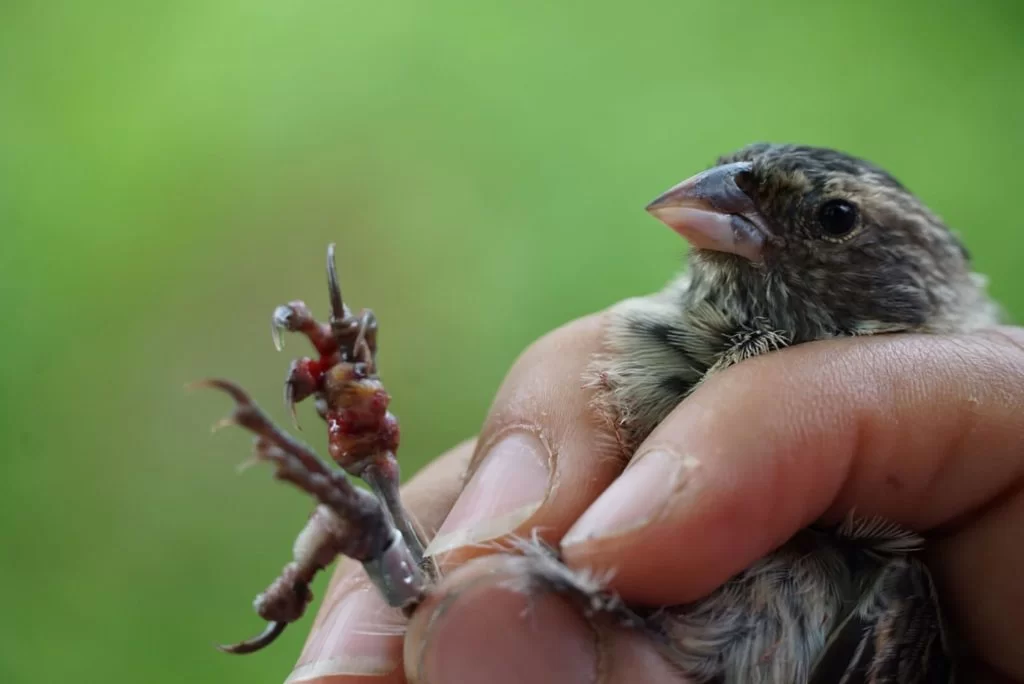
This Darwin Finch, compromised by the avian vampire fly, symbolizes the pressing
threats native species encounter in the Galápagos. ©Carolina Loyola
[one_second]
Background
Three species of Phyllodactylus Geckos — P. According to the IUCN Red List of Threatened Species for 2022, three species of Phyllodactylus geckos — P. According to the IUCN Red List of Threatened Species 2022, P. darwini, P. galapagensis and P. This worrying status highlights the need for more data. The IUCN does not have a status for Phyllodactylus simpsoni or P. P. Data Deficient is the classification for baurii due to the limited amount of information available on its population.
Galapagos Conservancy, in response to this, funded a 2022 study led by Dr. Diego F. Cisneros Heredia, a researcher and professor at the University of San Francisco de Quito. The primary objective of the study was to shed more light on Galapagos’ endemic geckos by combining observations from the field with morphological and physiological analyses as well as genetic analyses. It also investigated the behavior of the locals towards these reptiles. The integration of data is crucial for understanding the impact that climate change will have on these species.
The Study
The study included 548 geckos of which 364 are endemic, and 184 are introduced. One notable observation was that native species are more likely to be found in natural ecosystems while introduced species prefer human settlements. The study revealed that endemic gecko prefer warm microhabitats whereas introduced gecko are more flexible in their movement. The study concludes that endemic species are threatened by introduced species, habitat changes and competition. This highlights the importance of effective conservation and education strategies in order to protect the enigmatic creatures.
Washington Tapia Dr., our General Director, stressed the importance of these findings. “This information will guide us in all that we do.” We not only promote our research but also any study that can provide useful data to protect the iconic Galapagos species.
We are committed to this cause at Galapagos Conservancy. We continue to work with institutions like USFQ and Galapagos National Park Directorate to collect vital information and implement specific measures that will ensure the long-term preservation of Galapagos biodiversity.
[/one_second]
[one_second]
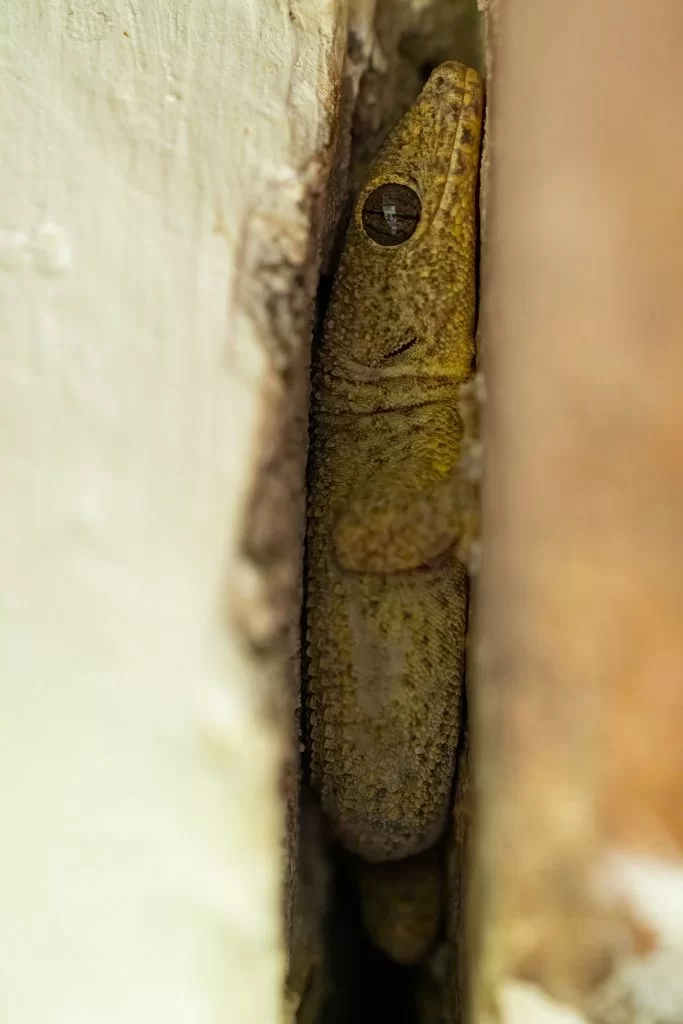
The gecko Phyllodactylus reissii is an introduced species that lives on walls and seeks refuge from predators in dry spaces or among wooden furniture. ©Juan Gallardo / Galápagos Conservancy
[/one_second]
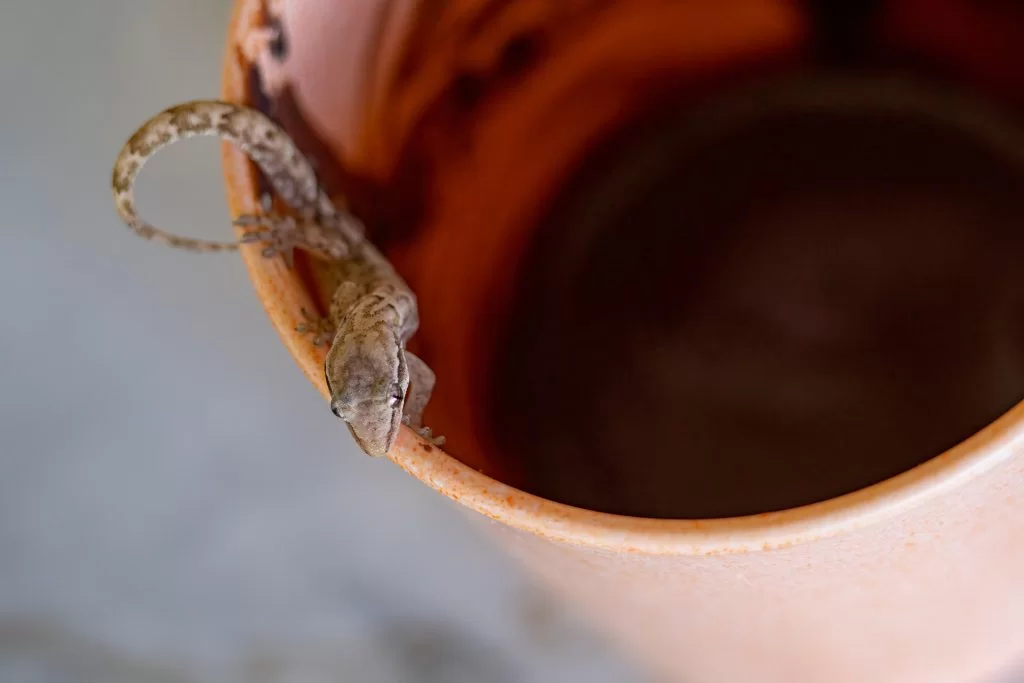
It’s common to find geckos inside homes. However, they feed on processed
products and unwanted insects in the household. ©Juan Gallardo / Galápagos Conservancy
Galapagos is home to two main lobster species: the red lobster ( Panulirus pnicillatus), and the green lobster( Panulirus gracilis). These spiny lobsters have spiky thick antennae, two frontal horns, and are both clawless. The red lobster is found in shallow, clear waters while the green lobster prefers sandy beaches of mangrove bays.
Lobster fishing has grown significantly in Galapagos since the 1960s. It was once the most profitable marine resource of the archipelago. Overfishing has led to a decrease in lobster populations and the need for urgent regulations to ensure sustainability. These regulations include fishing seasons, quotas and allowed sizes.
The spiny lobster fishing season began on August 28, following a population survey and dialogues with representatives of the Galapagos National Park Directorate, as well as technicians from the Galapagos National Park Directorate. The sea cucumber season will end on October 1, and lobster fishing will continue until December 31. The Galapagos Lobster’s conservation is vital, not only because of its economic importance, but also due to its role as an essential part of the ecosystem. It feeds on marine animal wastes and helps purify the surrounding environment.
[/one_second]
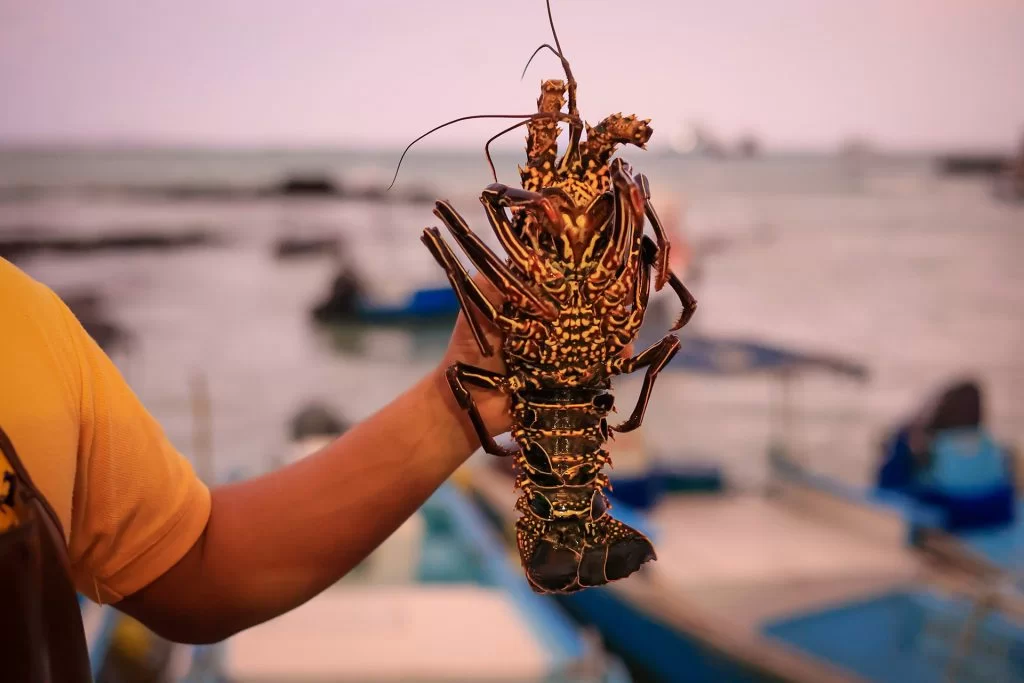
Lobsters have been a valuable commercial resource in Galápagos since the early 1960s, contributing significantly to the income of the archipelago’s fishermen. ©Galápagos Conservancy
[/one_second]
Santa Cruz fishermen have been actively involved in conservation efforts to protect lobsters. They work with the relevant authorities and organisations in order to ensure their long-term sustainability. Selective capture is one of their key strategies, allowing them to release lobsters that are not the right size or have eggs.
Our Director of Conservation Dr. Jorge Carrion stressed that Galapagos Lobsters are not just a delicacy, but also a vital indicator of the health of the marine ecosystem. He said that “their conservation not only safeguards this valuable natural heritage, but also ensures prosperity and harmony for future generations in this archipelago.”
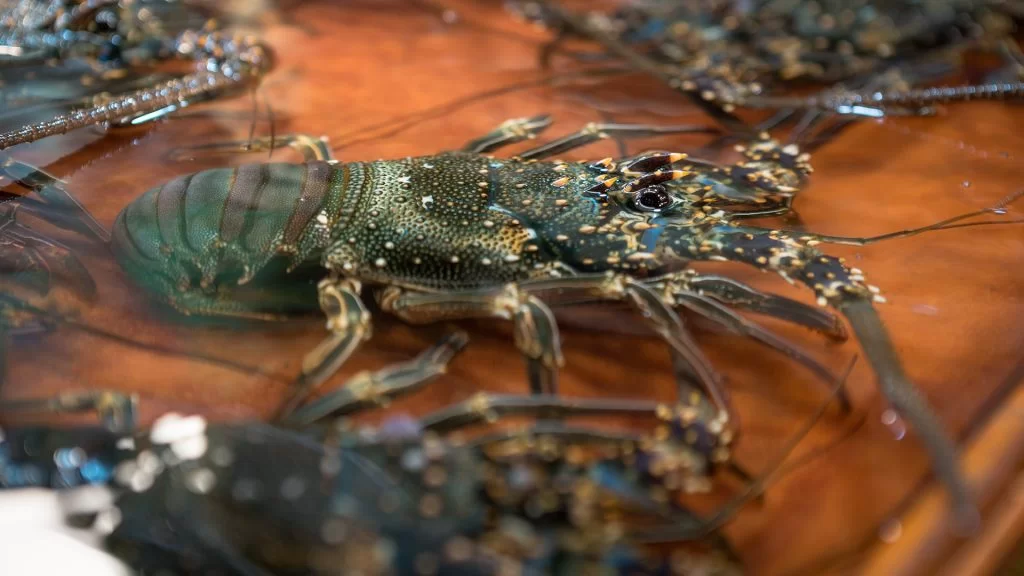
The green lobster (Panulirus gracillus) in Galápagos prefers habitats with rocky and sandy
bottoms in murky waters, often found in bays with mangrove ecosystems.
Novarino Casillo: Local Champions Spotlight
Novarino Castillo is an example of this progress. A local farmer, his vision to build a greenhouse was given a boost by Galapagos Conservancy. Novarino Castillo’s farm is nine miles from Puerto Ayora and a great example of responsible agriculture. It produces a variety of organic products, including eggplants, papayas, and more. This project not only supplies the local community with food, but it also does so without damaging natural habitats.
Composting is essential for sustainable agriculture
Novarino’s farming philosophy is based on composting organic waste. Compost is a rich organic fertilizer that improves soil health without chemical additives. Novarino said, “This allows me farm without chemicals and contribute to the care for the Galapagos Islands while offering healthy food to my community.”
Mission and Approach of Galapagos Conservancy
Galapagos Conservancy’s initiatives are guided by our unwavering commitment to ecological conservation and sustainable development in Galapagos. Novarino is one of our active projects that encourages environmentally responsible farming. Promote productive and sustainable farming to ensure a steady supply of fresh foods while protecting fragile ecosystems. Such projects also fuel local economic development and encourage community participation in conservation efforts.
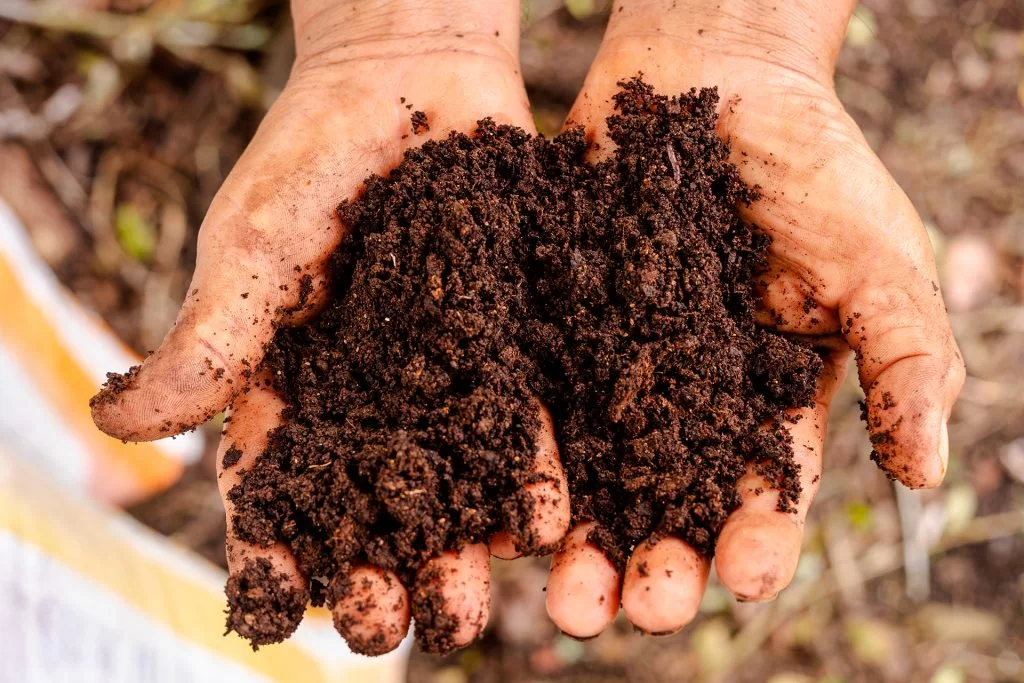
Novarino creates compost from decomposed organic materials, which he uses as organic fertilizer to enrich the soil and improve its fertility. ©Galápagos Conservancy
Community Engagement and Economic Development
Local farmers play a crucial role in the fight for conservation on the Galapagos Islands. Galapagos Conservancy supports citizen-led initiatives to provide sustainable solutions that will benefit the islands’ unique ecosystems and long-term health. We continue to innovate in Galapagos by combining community involvement and collaborative efforts to find ways to balance human activity with environmental responsibility. This blueprint for sustainable living resonates beyond the islands.
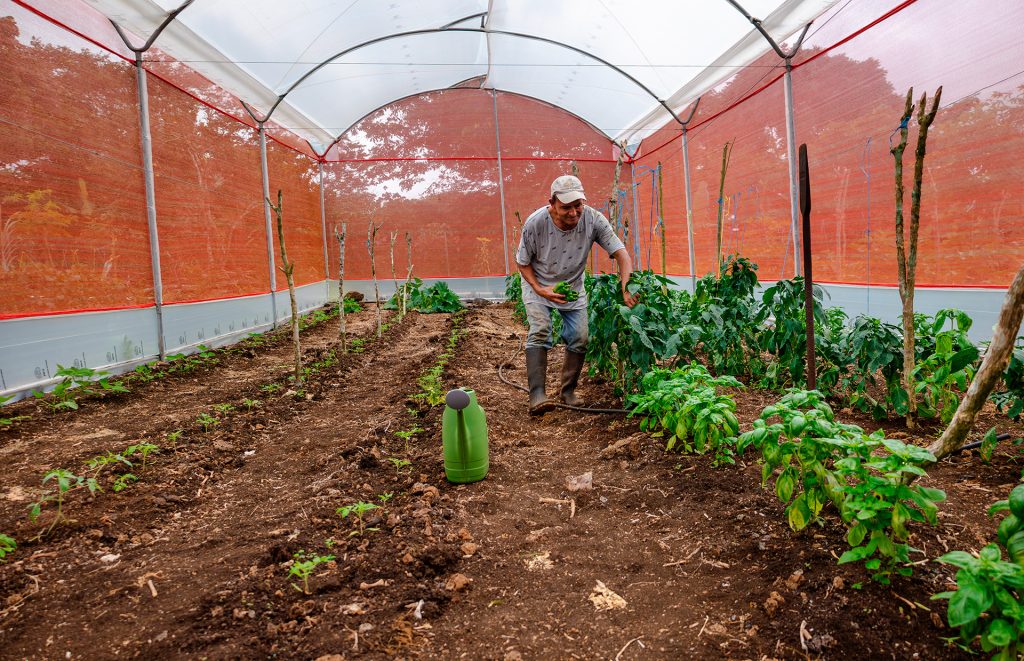
By promoting and strengthening conscious agricultural and livestock practices, we ensure the availability
of fresh food without endangering the delicate ecosystems of the Galápagos. ©Galápagos Conservancy
The conservation of the ‘Enchanted Islands’ is a monumental task that the Galapagos National Park Directorate (DPNG) has taken on with firmness and passion. The 314 park rangers that make up the institution carry out a vital mission daily, protecting every corner of this world heritage. However, this effort shouldn’t be only a task for a few: continuous integration and collaboration with local communities and visitors are essential to ensure sustainable and conscious use of Galapagos’ natural wealth.
Working together with the DPNG is essential for our General Director, scientist Washington Tapia. This collaboration with the park rangers goes beyond a simple alliance; it’s a vital strategy. “Our purpose is not just to manage resources from the US to Galapagos. We are committed to ecosystem restoration and species recovery. Moreover, it is fundamental for us to promote projects that place the community at the center of conservation,” states Tapia.
The Galapagos Archipelago, being the first site to be included in the UNESCO World Heritage list and meeting its four criteria, stands out for its uniqueness and global relevance. This distinction is due to its impressive natural beauty, its rich and unique species diversity, its volcanic origin, and its ever-changing geological dynamics. The presence of numerous animal and plant species, exclusive to these islands, underscores the significance of Galapagos as an invaluable legacy for all humanity. The 234 islands, islets, and rocks that make up the archipelago, according to the Galapagos Protected Areas Management Plan, house unique ecosystems that captivate and amaze the entire world.
Commemorating the 45th anniversary of the Galapagos Islands’ designation as a Natural World Heritage Site is not merely an act of celebration but a constant reminder of the responsibility that comes with protecting and preserving this biodiversity sanctuary. This distinction, beyond being an honorary title, is a call to action for both institutions and the global community to work together in conserving a place that, in essence, belongs to each and every one of us.
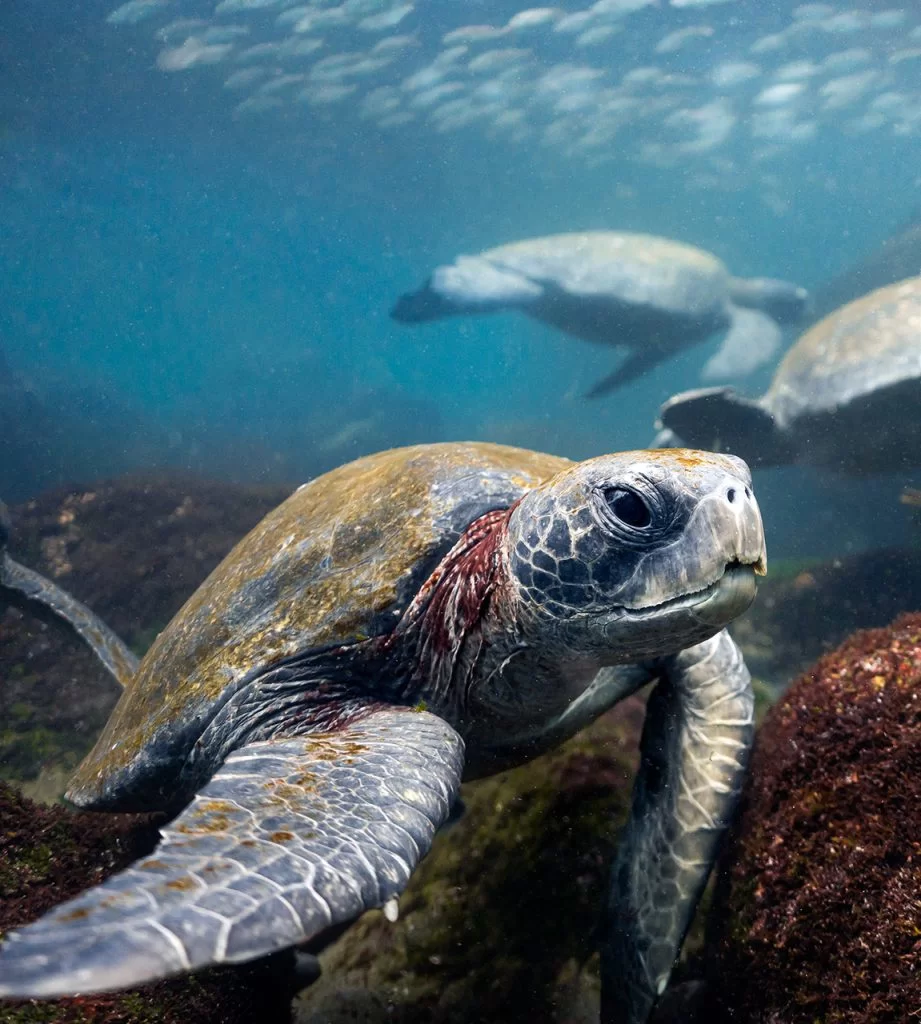
Galapagos Wildlife Expeditions to be Safeguarded in 2023
Five expeditions in southern Isabela Island were conducted to conduct a count of eight giant tortoise population on the Sierra Negra volcano and Cerro Azuul volcano. The census aims to determine the population size and demographics of Chelonoidis viscina and Chelonoidis negra populations on Cerro Azul and Sierra Negra. Information gathered will be crucial in conserving and protecting this emblematic species.
A similar expedition took place on Espanola island in March this year. 86 juvenile tortoises belonging to the Chelonoidis Hoodensis were released. The individuals were born in captivity and reintroduced to their natural habitats to increase genetic diversity and strengthen the existing populations. The presence of giant turtles on Espanola has a crucial role in the plant community structure, as it supports species such as albatrosses which require open spaces for landing and take-off. Scientists at the Galapagos Conservancy and rangers of the GNPD closely observe these tortoises released to their natural habitat. They assess their adaptability and survival.
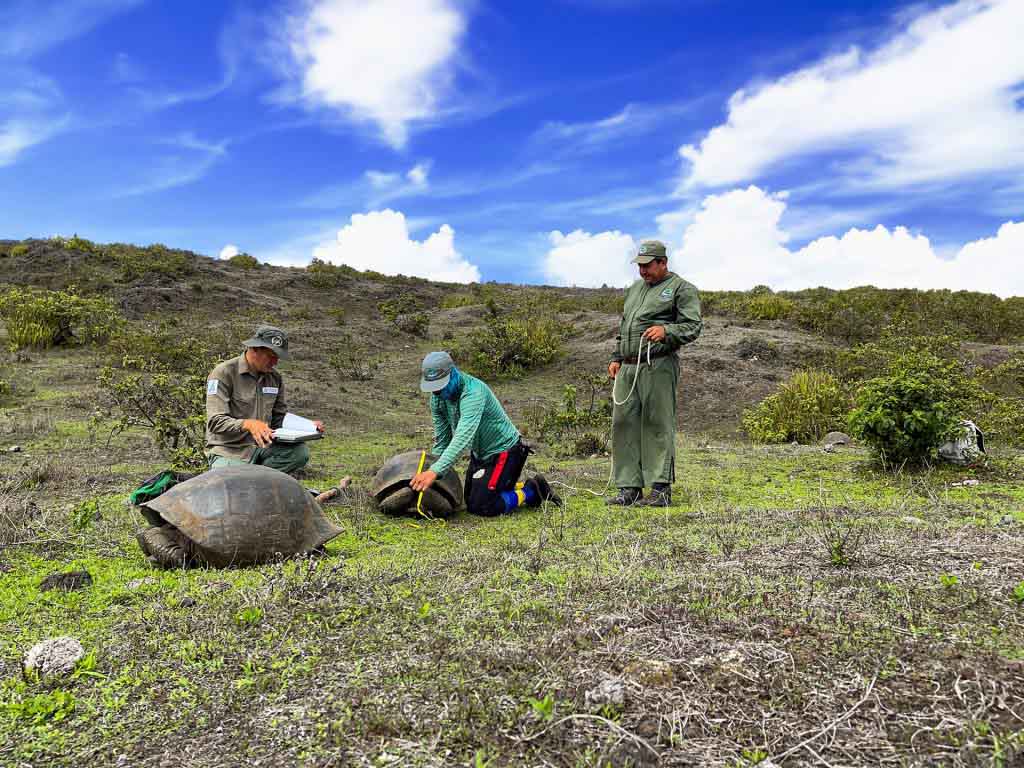
Unveiling the demography and size of 8 giant tortoise populations on Southern Isabela to identify threats and assess the overall conservation status of the ecosystem. ©Jorge Carrión / Galápagos Conservancy
C. hoodensis species was also reintroduced on Santa Fe Island as part of the island’s ecological restoration. Over 700 tortoises, including juveniles and subadults, were ready to fulfill their role as natural herbivores. Over 700 tortoises were reintroduced to Santa Fe Island as part of the island’s ecological restoration. These included juveniles and subadults who are ready to take on their natural role as herbivores. The island has been subjected to a number of ecological surveys. One event that will confirm that the tortoises are adapted is nesting. In order to find evidence, a short trip was undertaken covering the areas that were frequently visited by satellite-tracked turtles. Nests of these tortoises are yet to be found.
Scientists and park rangers set out on one of the most exciting expeditions on Fernandina island to locate a specimen from the Chelonoidis Phantomticus specie. The IUCN Red List of threatened species classifies this Fernandina-specific species as Critically Endangered. The team, despite the obstacles and challenging conditions, showed unwavering resolve and passion in searching for a male to match the female discovered in 2019. The team has not yet found another specimen, but the data and observations they collected will be valuable for future conservation efforts in Fernandina.
The team’s first expedition in 2023 was to Espanola Island. They monitored vegetation plots, to better understand the impact giant tortoises have on plant communities, and conducted a comprehensive albatross count along the southern coast. This census was designed to collect updated data on the demographics of these birds and their population size, as well as explore how vegetation affects their presence in the interior and along the coast. Carrion stressed the importance in conserving these species. He said, “Through Iniciativa Galapagos we will continue with future expeditions and conservation project to protect our invaluable natural heritage and promote global awareness about the importance of preserving our fragile ecosystems.”

Repatriation of 86 juvenile Chelonoidis hoodensis tortoises to Española Island
to increase population size and expand their distribution on the island. ©Diego Bermeo / GNPD